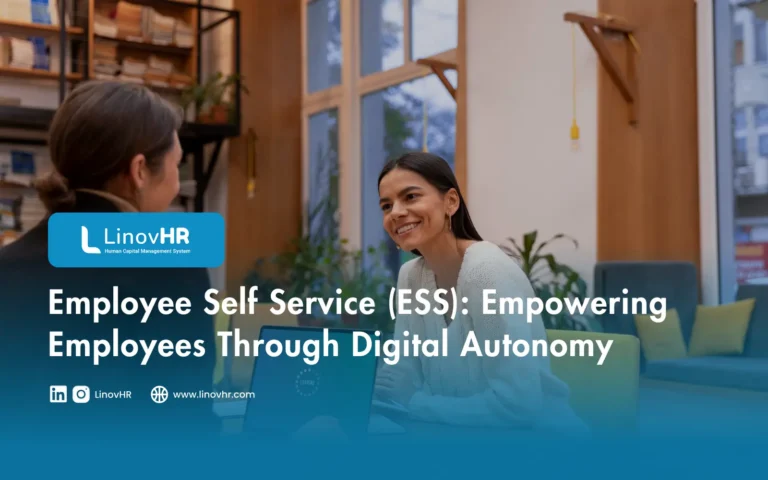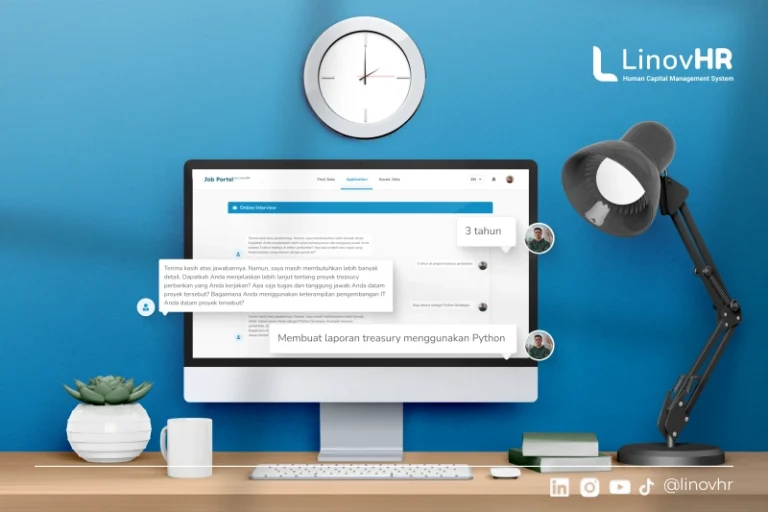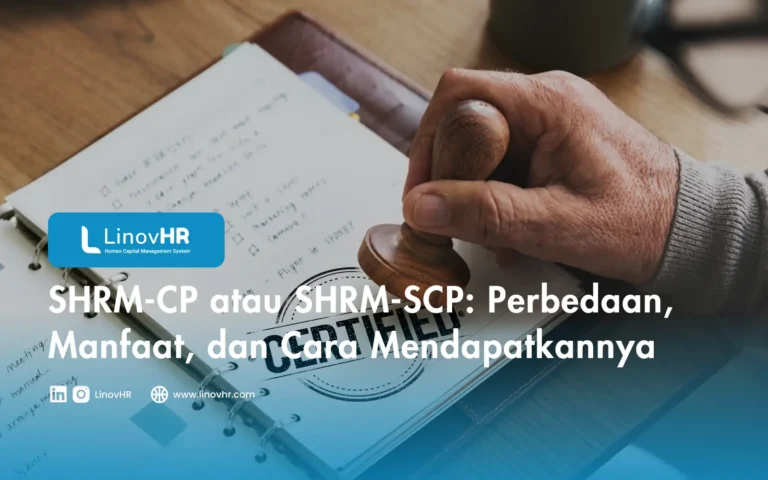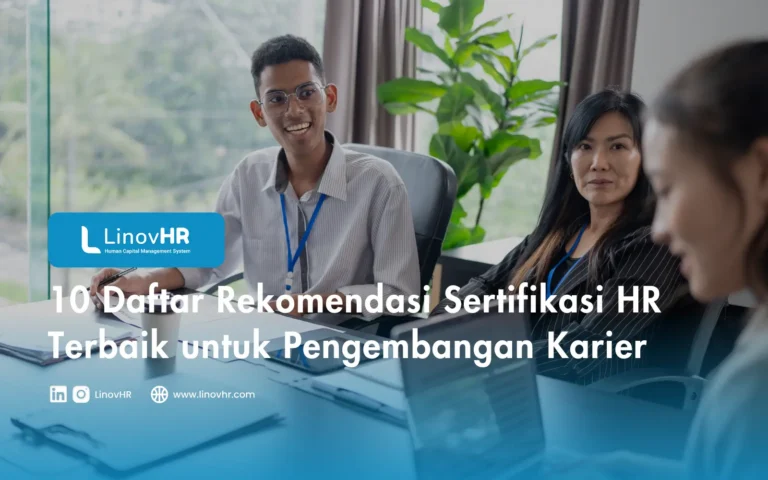In today’s fast evolving digital workplace, efficiency and autonomy have become crucial elements of employee engagement and organizational success.
Traditional HR processes often require time consuming interactions with HR personnel for simple tasks, such as updating personal information or checking leave balances.
This manual approach can slow down productivity and reduce employee satisfaction, that’s where employee self-service or ESS steps in. By giving employees direct access to their HR data through tasks, foster transparency, and improve overall operational efficiency.
In this article you will explore the meaning of ESS and how it works, key benefits of employee self-service, and implementation ESS tips for companies to help you choose the one that fits your business needs.
What Is ESS and How It Works

Employee self-service is a digital platform that allows employees to access, manage, and update their personal and employment related information without the constant need for HR intervention.
Commonly integrated within an HRIS employee self-service system, ESS enables staff to handle administrative processes independently ranging from attendance tracking, leave request, and payroll viewing to performance feedback and benefit enrollment.
At its core, ESS operates through a secure online portal or mobile application that connects employees directly to their company’s HR database. This digital bridge eliminates repetitive paperwork, reduces errors caused by manual input, and ensures data is always up to date.
Employees can log in anytime to manage their profiles, while HR teams can focus on strategic initiatives such as talent development or organizational planning.
By leveraging cloud-based and on-premise HRIS technology, businesses can ensure that every employee, regardless of location, has real time access to essential HR information. This shift not only enhances transparency but also strengthens trust between employees and management.
Employee self-service plays a key role in building a more agile, self-sufficient, and digitally empowered workforce.
Key Benefits of Employee Self-Service

Having established a clear understanding of the ESS concept, let’s examine the key advantages it provides for employees, HR professionals, and companies alike.
1. Enhanced Efficiency and Time Savings
With employee self-service, employees can independently complete routine HR tasks such as updating contact details, applying for leave, or downloading payslips without waiting for HR approval.
This automation significantly reduces administrative workload and frees up HR teams to focus on strategic business goals.
2. Improved Data Accuracy and Transparency
Manual data handling often leads to human errors. Employee self-service minimizes these mistakes by allowing employees to directly manage their personal information, ensuring higher accuracy and real time updates.
Transparency also improves as employees can easily access their data and HR policies whenever needed.
3. Greater Employee Empowerment and Engagement
Empowering employees to take control of their HR information creates a sense of trust and ownership. When employees feel autonomous, they are more engaged,satisfied, and motivated to perform.
Employee self-service thus contributes to a stronger company culture built on accountability and mutual respect.
4. Accessible Anytime and Anywhere
Cloud and on-premise based employee self-service software provides 24/7 accessibility. Whether employees are working remotely, on-site, or traveling. They can instantly access their HR records, request approvals, or submit documents with just a few clicks.
5. Cost Reduction and Resource Optimization
By minimizing paper based administration and repetitive HR tasks, companies can reduce operational costs. ESS systems streamline processes, allowing HR teams to focus on strategic areas like workforce development and analytics instead of manual processing.
6. Integrated HR Ecosystem
When linked to a full HRIS employee self-service suite, ESS ensures seamless integration with payroll, attendance, and performance management modules. This interconnected system promotes consistency and simplifies reporting and compliance tasks.
Also read: 10 Recommended HRIS Applications for Modern Businesses in 2025
Implementation Tips for Employee Self-Service in Companies

While adopting an employee self-service software can be transformative, its success highly depends on how well the system is implemented and introduced to employees.
1. Evaluate Your Current HR Processes
Before implementing ESS, assess your existing HR workflows. Identify repetitive tasks and areas where employees often rely on HR support. This helps determine which processes will benefit most from automation and self-service features.
2. Choose the Right Employee Self-Service Software
Selecting the right platform is essential, opt for a system that integrates smoothly with your existing HRIS and provides user friendly navigation. The software should also offer mobile compatibility and secure data protection measures to safeguard employee information.
3. Provide Comprehensive Training and Support
Even the most intuitive employee self-service systems require proper onboarding. Conduct training sessions to help employees understand how to navigate the platform, update information, and use various features effectively. Continuous support will encourage adoption and reduce resistance to change.
You can make these onboarding sessions more engaging by designing slides with the Adobe Express AI presentation maker, allowing HR teams to create professional and visually appealing presentations in minutes.
4. Communicate the Benefits Clearly
When introducing employee self-service, communicate its benefits transparently to all employees. Explain how it simplifies daily tasks, increases accuracy, and saves time. A clear communication plan builds confidence and encourages employees to embrace the system.
5. Monitor Usage and Gather Feedback
Implementation doesn’t stop after deployment. Regularly track system usage, gather employee feedback, and identify potential pain points. Continuous improvement ensures the platform evolves with the company needs and maintains user satisfaction.
Use LinovHR’s Employee Self-Service Software for Your Company!
Among the various employee self-service software available, LinovHR’s employee self-service stands out as a comprehensive and locally optimized solution designed for Indonesian businesses.
LinovHR combines modern HR technology with in-depth understanding of local businesses processes and compliance needs, making it the perfect partner for companies aiming to streamline HR operations.
With LinovHR’s HRIS employee self-service, employees can easily access payslips, submit leave requests, update personal information, view attendance records, and even track performance reviews in one platform.
Request a free demo of LinovHR’s employee self-service now and experience how effortless and efficient HR processes can be with LinovHR!






